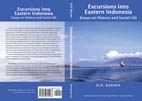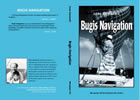Indonesia
Indonesia
 #66 Living in a Sacred Cosmos: Indonesia and the Future of Islam, by Bernard Adeney-Risakotta. 406pp. (August 2018).
#66 Living in a Sacred Cosmos: Indonesia and the Future of Islam, by Bernard Adeney-Risakotta. 406pp. (August 2018).
Cloth $39.00; paper $28.00
The future of Islam lies in Asia. Is there hope for peace and justice between Islam and the West? An answer may lie in the ancient, unique civilazation of Indonesia, where modern, religious people still live in a sacred cosmos. Indonesia is experiencing an Islamic renaissance. . (and) this community is more religiously diverse than it has ever been, even though it is threatened by growing Islamic radicalism. What do Muslims think about democracy, scientific rationality, and equal human rights for all, especially for women and non-Muslims? How do Muslims respond to the global environmental crisis? This book addresses these questions through the lens of empirical research on the views of people in Indonesia, the largest Muslim country in the world.
>Click here or on book cover for additional information
 #63 Excursions into Eastern Indonesia: Essays on History and Social Life, by R.H. Barnes.398pp. (December 2013).
#63 Excursions into Eastern Indonesia: Essays on History and Social Life, by R.H. Barnes.398pp. (December 2013).
Cloth $39.00; paper $28.00
For over forty years, R.H. Barnes has explored what it is possible to know of the history of the region of eastern Indonesia, where there is little in the way of a formal record of the past. He has traveled widely in these islands, and has conducted extended research in three separate sites on the islands of Lembata and Adonara. This book is a collection of articles that look at the past and representations of the past from a variety of perspectives. Above all, they attempt to open up the pat of what once were nearly completely illiterate peoples.
>Click here or on book cover for additional information
 #62 The Entangled State: Sorcery, State Control, and Violence in Indonesia, by Nicholas Herriman.172 pp. (2012).
#62 The Entangled State: Sorcery, State Control, and Violence in Indonesia, by Nicholas Herriman.172 pp. (2012).
Cloth $35.00; paper $22.00
The author studies the way state officials interacted with local village residents, and
the conundrum created for officials who sympathized with the residents’ killing of alleged sorcerers, yet were constrained by the rule of law. Prevailing models of state-society interaction in Indonesia proved inadequate to describe the response to this conundrum, and Herriman’s study outlines a different model.
Reviewers’ Comments: “In this crisply written book…(Herriman) develops a provocative critique of recent directions in the ways that both Indonesian studies and anthropology have conceptualized the state. …The argument is very effective, clearly executed, and should earn ‘The entangled state’ a place as essential reading in courses on political anthropology.”- N.J. Long, Journal of the Royal Anthropological Institute
>Click here or on book cover for additional information
 #53 Seeds of Knowledge: The Beginning of Integrated Pest Management in Java, by Yunita Triwardani Winarto.
#53 Seeds of Knowledge: The Beginning of Integrated Pest Management in Java, by Yunita Triwardani Winarto.
430 pp. (2004). Cloth $39.00; paper $28.00
Examines the process of knowledge construction among rice farmers of the lowland irrigated rice fields on the north coast of West Java —how the introduction of Integrated Pest management principles led to changes in farmers’ knowledge of pests and diseases and subsequently to changes in farming practices as new ideas were incorporated into a body of local knowledge, modified and developed through time.
Reviewers’ Comments: “…This sympathetic ethnographic account of the farmers’ struggles will be absorbing reading for anyone interested in the history of Indonesian agriculture. But the central themes about the process by which new knowledge is gained and then passed on to others at the micro level of the village will challenge and provoke anyone interested in issues of social change and development, especially in Indonesia.” . -J. Maxwell, Bulletin of Indonesian Economic Studies
Click here or on book cover for additional information
 #48 Bugis Navigation, by Gene Ammarell. 314 pp. (1999). Cloth $38.00; paper $27.00.
#48 Bugis Navigation, by Gene Ammarell. 314 pp. (1999). Cloth $38.00; paper $27.00.
An ethnographic study of the indigenous navigational practices of a group of Bugis seafarers in an island village located in the Flores Sea, midway between South Sulawesi and Sumbawa in Indonesia. (Includes four oversized fold-out maps)
Reviewer Comments: “….a terrific book….will become a benchmark study….a fun read, leaving the reader convinced that nothing could be more interesting thansailing with (the) Balobaloang though Indonesia’s star-lit seas.” -E. Tagliacozzo, Indonesia
“…..fascinating book….excellent collection of maps and figures….One hopes that current ethnographic research on other maritime groups in Indonesia…will be undertaken with this attention to fine, detailed ethnography.” -C. Duncan, The Asia Pacific Journal of Anthropology
>Click here or on book cover for additional information
 #43 Being Modern in Bali: Image and Change, edited by Adrian Vickers. 246 pp. (1996). Paper, $20.00
#43 Being Modern in Bali: Image and Change, edited by Adrian Vickers. 246 pp. (1996). Paper, $20.00
Eight essays organized around the theme of perceptions of modernity and tradition in Bali; demonstrate the ongoing role of debates about modernity and tradition in Southeast Asia, particularly regarding issues of national and ethnic identity.
Reviewers’ Comments: ”…belongs among (the rare) studies that provide a necessary link between theoretical debate and actual human experience.” -Richard O’Connor
Click here or on book cover for additional information
#40 Islamic Peasants and the State: The 1908 Anti-Tax Rebellion in West Sumatra, by Ken Young. 392 pp. (1994). Cloth, $35.00; paper, $22.00
Addresses issues of importance not only to Southeast Asianists but to anthropologists, political scientists, and Islamists interested in the transformation of the non-Western world on the eve of the twentieth century.
Reviewers’ Comments: “…valuable in defining and… filling some serious gaps in recent Minangkabau history…restores the traditional Islamic groups (Sufi brotherhoods) to a place in (this) history which cannot be ignored.” -Audrey R. Kahin
#35 Indonesian Economic History of the Dutch Colonial Era, edited by Anne Booth, William J. O’Malley and Anna Weidemann., x, 369 pp. (1990). Cloth, $30.00; paper, $17.00.
A collection of fifteen essays providing a well-integrated, thoroughly documented survey of Indonesian economic development in the final century of Dutch colonial rule.
Reviewers’ Comments: “…offers a fair amount of variation in approach and style…valuable material…a useful introduction to some of the major issues in Indonesian economic history.” -Journal of Asian Studies
Film on Indonesia, a Catalog, by Toby Alice Volkman, ix, 52 pp. (1985). $4.00
Reviewers’ Comments: “…practically informative, ethnographically aware, and readable…” -Robert Hefner
”…a valuable resource for teachers and students of Indonesian studies, anthropology, ethnographic film…” -Asian Studies Association of Australia
